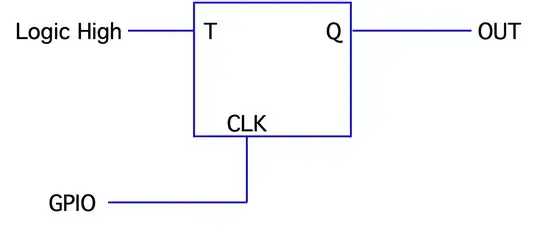I have an STM6821TWY6F watchdog IC for my MCU. When the MCU gracefully goes to sleep it will disable the a watchdog to prevent unwanted wake ups. The watchdog was designed to look for an oscillating signal from the MCU that it can't and shouldn't provide while asleep.
The disabling/enabling is done using a set/reset approach. However, I am running out of GPIOs on my MCU and I'd like to know if I can still use this approach with just 1 gpio. Meaning the same gpio sets and resets my latch?
